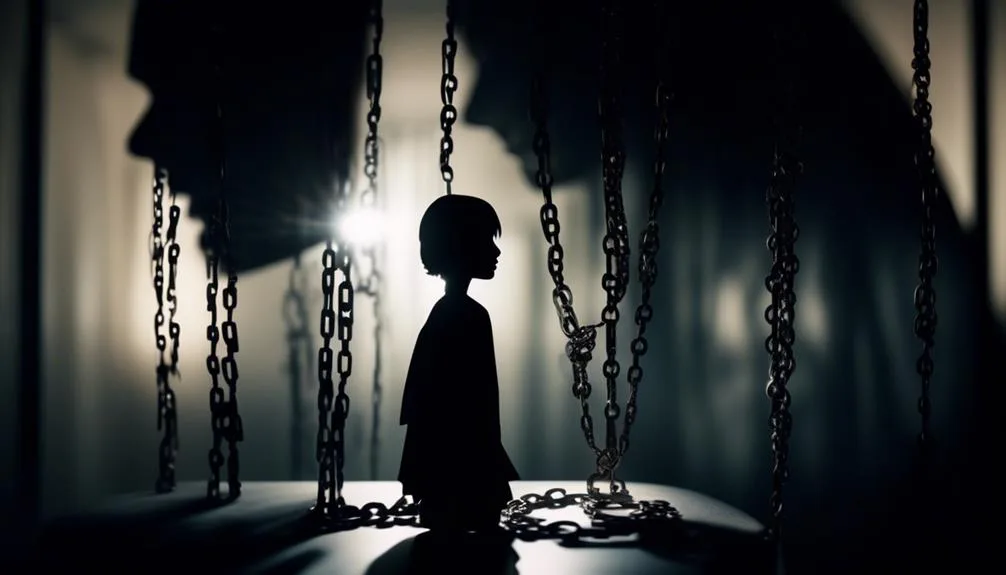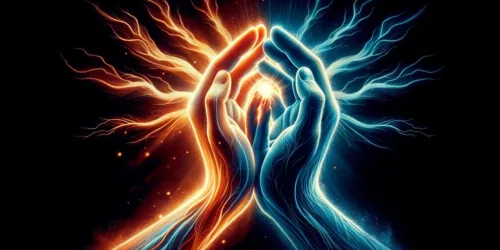Insight Into the Dark Motives of Bullies
You've likely pondered whether there's any truth to the idea that bullies are themselves victims of some prior mistreatment, an unsettling notion that suggests a cyclical nature to their behavior.
As you reflect on the experiences of those who've endured the sharp sting of ridicule or the heavy silence of ostracism, it's important to recognize that the bully's story isn't always black and white.
Consider the possibility that their aggression stems from a place of profound pain or insecurity, an insight that doesn't excuse their actions but offers a glimpse into a hidden struggle.
By exploring the myriad forces that shape a bully's psyche, you're embarking on a journey to unravel the complex tapestry of human behavior that could hold the key to mitigating the devastating impact of their actions.
What you find may challenge your preconceptions and open up a pathway to empathetic understanding and actionable solutions.
Key Takeaways
- Bullying can stem from emotional trauma, insecurity, jealousy, past experiences, learned behavior, poor social skills, anonymity in the online world, lack of compassion and empathy, and a desire for power or popularity.
- Bullying can have severe impacts on the mental health of the victim, including the development of anxiety disorders, depression, and antisocial personality disorder.
- Bullying can also lead to academic difficulties, decreased self-esteem, loss of interest in social and scholarly activities, nightmares, reduced school attendance, and thoughts of suicide or self-harm.
- Bullying is a complex issue that affects individuals of all ages, from adolescents to adults. Understanding the underlying motives behind bullying behavior is crucial in addressing and preventing it effectively.
Defining Bullying Behaviors
To get to the heart of bullying, it's essential to understand the behaviors that characterize this harmful practice. Types of bullying—verbal, social, physical, cyber, racist, and sexual—are varied, yet they all share the capacity to deeply wound a person's psyche.
Verbal bullying involves derogatory comments, while social bullying manipulates relationships. Physical bullying inflicts bodily harm, whereas cyberbullying exploits digital anonymity. Racist and sexual bullying target specific vulnerabilities.
Each type erodes self-worth and can precipitate a cascade of psychological disturbances. The impact of bullying on mental health is profound; victims may develop anxiety, depression, or antisocial traits.
It's crucial to recognize these behaviors not only to intervene but also to foster empathy for those caught in such a distressing dynamic.
Consequences of Being Bullied

When you're bullied, the adverse effects can ripple through every aspect of your life, manifesting in both physical and psychological distress. The long term effects can be profound and varied.
It's critical to understand that:
- Your mental health may suffer significantly, leading to conditions like depression, anxiety, or even post-traumatic stress disorder.
- Academic and professional performance could decline as a result of decreased concentration, confidence, and self-esteem.
- Social relationships might deteriorate due to withdrawal or mistrust, impacting your support systems that are essential for recovery and resilience.
Addressing these consequences requires a clinical approach that integrates empathy and practical support strategies. It's not just about healing; it's about equipping you with tools to rebuild and strengthen your mental and emotional fortitude.
Emotional Trauma as a Catalyst

Understanding that the consequences of being bullied can profoundly affect mental health and social relationships, it's crucial to recognize how emotional trauma often serves as the underlying force driving individuals to become bullies themselves. This cycle of hurt perpetuates as the bullied turn to bullying, seeking control or a reprisal of their pain upon others.
Emotional healing is thus paramount, not only for the bullied but also for the bully, to break this cycle. Effective support systems play a pivotal role in this process, fostering environments where empathy and understanding can thrive. Without such interventions, the emotional wounds may deepen, leading to further entrenchment in harmful behaviors.
It's imperative that we address these traumas with both clinical insight and heartfelt empathy to facilitate true healing.
Insecurity and Social Dominance

Why do some individuals strive to exert dominance over their peers through bullying, if not to mask their own insecurities? Insecurity and social dominance are deeply intertwined, often revealing a hidden struggle within the bully. Consider these points:
- Bullies may project personal inadequacies onto others, striving for control to compensate for their feelings of powerlessness.
- The quest for social dominance can be a misguided attempt to secure a stable identity in social hierarchies, especially if they feel undervalued.
- The psychological impact of bullying on victims is profound, but bullies themselves are often grappling with internal turmoil, which they externalize through harmful behaviors.
Understanding these motives can be a crucial step in addressing the roots of bullying and fostering empathy towards all those affected.
The Cycle of Learned Aggression

The cycle of learned aggression often stems from early exposure to bullying behaviors, imprinting a pattern of conduct that individuals may repeat later in life. The impact of childhood experiences is profound; when you witness or endure bullying during formative years, it can become a misguided norm. You might internalize this aggression and, without conscious awareness, propagate the cycle. Breaking this cycle requires a deliberate and often challenging confrontation of these learned behaviors.
Empathetically, it's vital to understand that this cycle isn't immutable. With support and awareness, you can unlearn these patterns and foster healthier interactions. Clinically, interventions often focus on developing empathy, improving communication skills, and establishing positive coping strategies. These steps are crucial for healing and preventing the perpetuation of aggression.
Digital Anonymity and Empathy Deficit

Hiding behind the veil of digital anonymity, individuals may engage in cyberbullying, often due to an empathy deficit that skews their perception of the consequences of their actions. This detachment from the immediate emotional response of their targets can lead to a harsher, more persistent form of bullying.
To tackle this issue:
- Cyberbullying prevention must address the anonymity factor by educating users about the real-world impact of their online behavior.
- Empathy building strategies should be integrated into digital platforms, encouraging users to reflect on the potential harm of their words.
- Societal norms around digital communication need reshaping, promoting responsibility and kindness.
Understanding the interplay between digital anonymity and empathy deficit is critical. By doing so, you can help create safer online communities.
Frequently Asked Questions
How Does the Cultural and Societal Context Influence the Motives and Prevalence of Bullying in Different Regions or Communities?
Cultural norms and legal frameworks in your region shape bullying's motives and frequency by either deterring behavior or, unfortunately, sometimes perpetuating it through societal acceptance or inadequate deterrents.
Can Bullying Behaviors Be Linked to Specific Personality Disorders, and if So, Which Ones Are Most Commonly Associated?
Bullying behaviors can reflect underlying personality disorders, often antisocial or narcissistic traits. You'll need a thorough personality assessment and tailored intervention strategies to address these complex behaviors effectively.
How Does the Presence of Bystanders and Their Reactions to Bullying Incidents Affect the Bully's Motivations and Actions?
When you're in hot water, the spectator effect can either embolden bullies or check their behavior, depending on bystanders' intervention strategies, which critically shape the bully's motivations and actions.
What Role Do Educational Institutions and Workplace Environments Play in Inadvertently Encouraging or Sustaining Bullying Behavior Among Peers or Colleagues?
You'll find that lax school policies and indifferent leadership responses can inadvertently foster a climate where bullying thrives among peers, undermining the well-being and safety of the educational or workplace environment.
Are There Any Long-Term Studies That Track Former Bullies to Assess How Their Behavior in Youth Has Impacted Their Adult Relationships and Career Paths?
You're curious about long-term studies on bullies' futures. Sadly, there's a gap in bully rehabilitation research, with few studies linking bully demographics to adult outcomes in relationships and careers. More analysis is needed.
Conclusion
So, you've dissected the bully's psyche and unearthed their twisted roots. Irony at its finest—broken souls breaking others, seeking power in a powerless existence. You witness their emotional void, cloaked in false bravado, and realize, bullies are just architects of their own insecurities, crafting monuments of misery.
As you analyze with clinical coldness, the solution seems almost comical: heal the bullies to heal the bullied. If only it were so simple, right?






